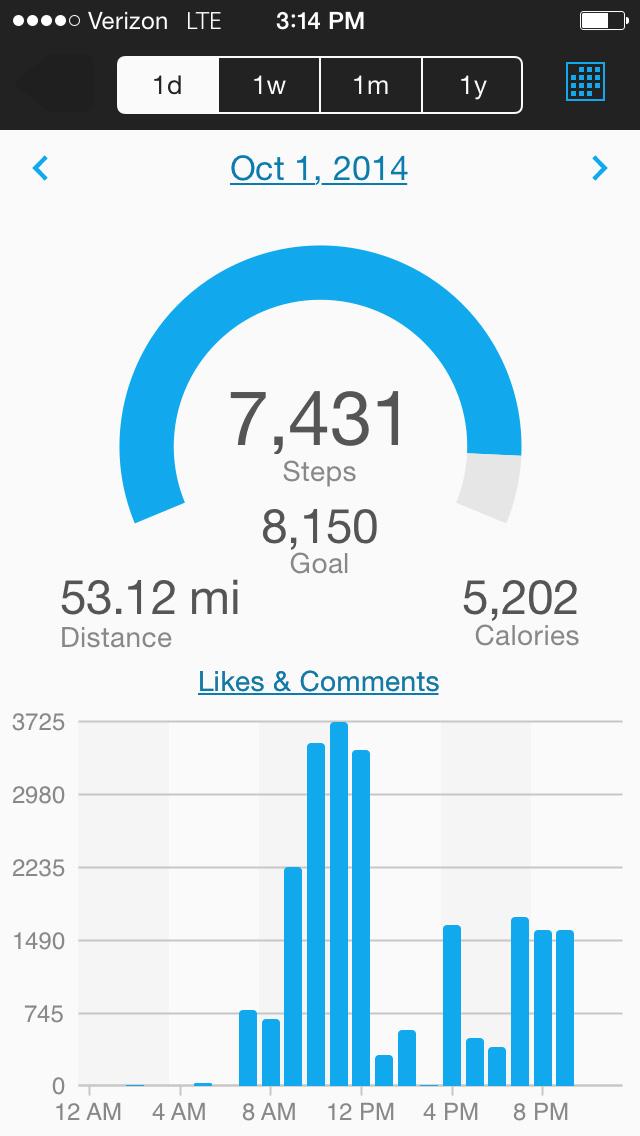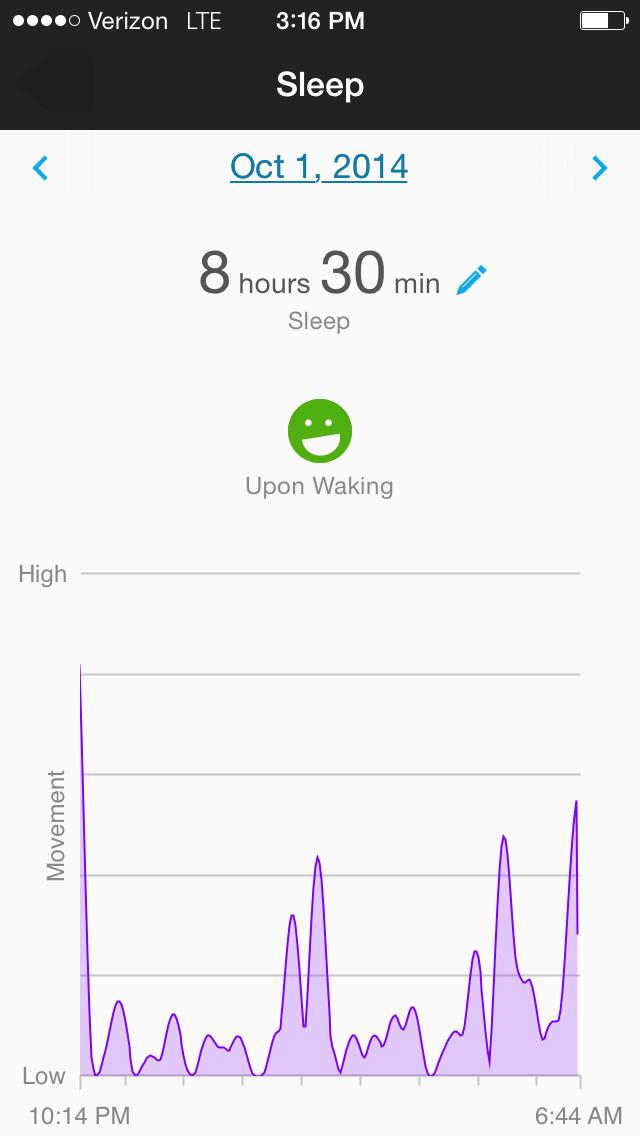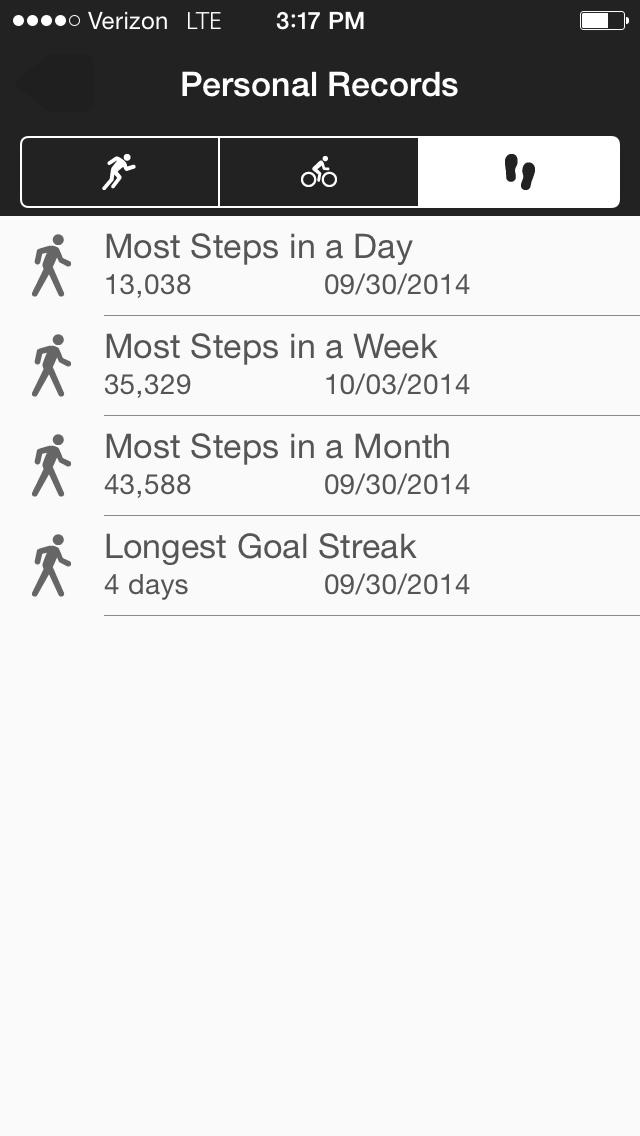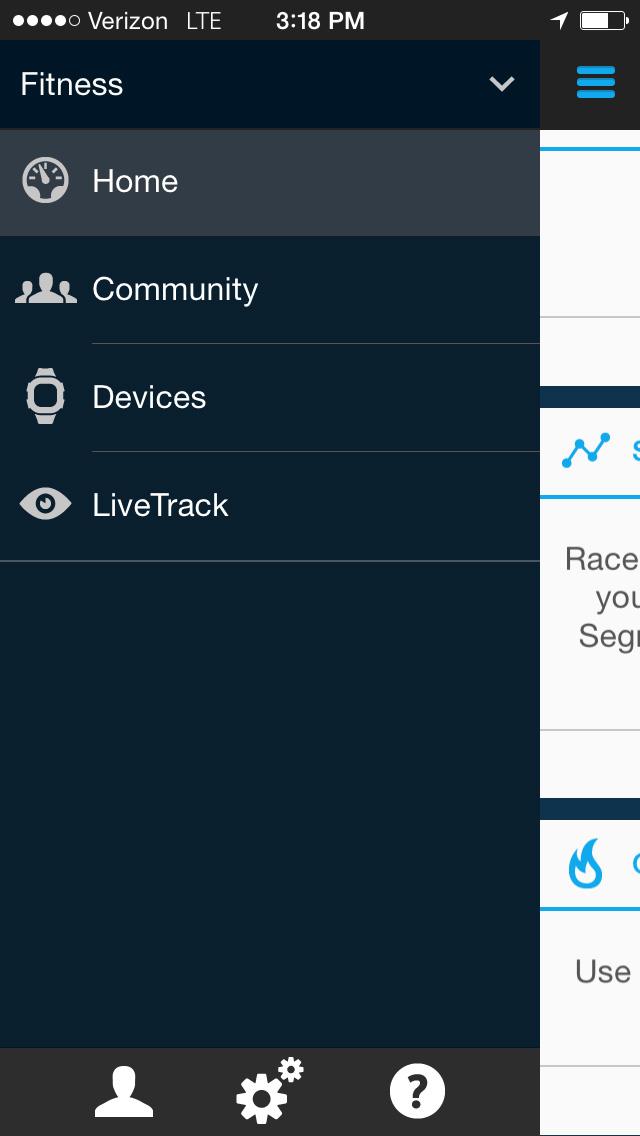“Garmin mixes activity tracking and smart notifications in a fitness band that bridges the gap between step counter and smartwatch.”
- Sleek, smooth no button design
- Touch screen
- Smart Notifications
- Vibration alerts
- Water resistant to 50 meters (5 ATM)
- Move reminder
- OLED display is difficult to see in direct sunlight
- Only one alarm, and no way to add more
In January 2014, when GPS giant Garmin announced it was stepping into the fitness-tracker market with the Vívofit, we were excited to see where the device would take things. While we weren’t disappointed with the device, which we awarded 3.5 stars, missing features like a backlight and vibration alerts kept it from challenging Fitbit or Jawbone.
Buy it now from:
Fast forward nine months to September 2014, and it becomes obvious that the Vívofit was merely a first try. With the new, feature-rich Vívosmart Activity Tracker, Garmin is not only going all-in with fitness trackers, it’s taking the fight straight to smartwatches from the likes of Samsung and Apple, too.
Features and design
This is a fitness band that Apple co-founder Steve Jobs would have loved. It looks more like a stylish, understated designer wristband than a sports fitness device. Thin, sleek and smooth, the Vívosmart has no buttons or visible display. The only element that disrupts the band’s matte black curves is the brushed-metal clasp that keeps it attached to the wrist.
The same minimalism carries over to the interface. There is nothing to see on the band until it is either double tapped, or raised with a “checking the time” twist of the wrist, which magically springs it to life. A touchscreen OLED display shows the time, day of the week, date, and common activity tracker metrics like steps taken, distance traveled, calories burned, and steps needed to reach the goal. At 128 x 16 pixels, the resolution is low, but the screen is small: only 1.35 inches wide and 0.14 inches tall. When paired with optional heart and bicycle sensors, the Vívosmart can also display heart rate and bike speed. At night it can be used to log sleep time, and those who own one of Garmin’s VIRB action cameras can use the Vívosmart as a remote control to start and stop recording, or snap a still shot.
This is a fitness band that Apple co-founder Steve Jobs would have loved.
Once paired with a compatible Android or iOS device, the Vívosmart becomes a wrist-based extension of the phone’s notification system. The Vívosmart can silently alert users to incoming phone calls, emails, text messages, and calendar items. With a swipe of the touch screen and a few taps, you can even read the entire text content of the message or email on the watch. The Vívosmart can also control audio playing on the phone. And for those who often misplace their phones, Vívosmart can send an audio tone to the phone and keep it ringing until the phone is found. The whole package is is water resistant to 50 meters, so it’s perfectly fine to swim, surf, or shower without taking it off.
What’s in the box
Our Vívosmart Activity Tracker arrived in a box that included the activity tracker band, a USB charging cord with data clip, one small plastic band that acts as a double lock for the Vívosmart’s wrist attachment (Garmin calls it a “vívokeeper”), and a quick-start manual.
Performance and use
We had no problem setting up the Vívosmart using our iPhone 5. Since it has no buttons, all of the Vívosmart’s settings are controlled through the Garmin Connect smartphone app, which is fairly simple to add the device with. You find it in a list of compatible Garmin devices, enter a code from the watch on the phone, and it connects. The app also asks for your birthdate, gender, height, weight, normal sleep and wake times, and heart-rate zones.

The app allows all sorts of customizations. For the screen, you can tinker with brightness, left- or right-hand orientation, and choose which screens (steps, calories, distance, etc.) are accessible within the watch. It was nice to be able to remove the functions that we weren’t interested in so we didn’t have to swipe past them each time we checked our stats. The Home screen can be set to default to whichever metric is most important. We chose time and date.
We currently plan our days with a series of customized alarms on a Fitbit Flex, so we were disappointed to discover that while the Vívosmart has a vibration alarm, there is only one and it can only be set to one time per day. The only option available to customize the alarm is to have it go off every day, or on weekdays. With a band loaded with all these features, it seems odd that Garmin chose to give it fewer alarms than our old 1980s Casio digital watch.
The Garmin Vívosmart might be all the smartwatch most people need.
This silent phone notification setup also worked well on bike rides, or while running. With the phone in our back pocket and the ringer turned off, we didn’t worry about missing important messages from home. In fact, we found that once we began wearing the Vívosmart, we never turned our ringer back on. The vibration alerts on the wrist made audible phone ringers seem as archaic as rotary dial phones, and just plain rude when out in public.
Using the Vívosmart to keep track of exercise was equally pleasant. At the start of a run or bike ride we double tapped the screen, then held a finger down on the band until the menu came up. To start an activity we tapped the graphic of a person running. The Vívosmart automatically checks to see if an ANT+ compatible heart-rate monitor or bike-speed sensor were in range and displayed a start-pause arrow. A quick tap on the arrow starts the timer and Vívosmart begins recording the time, heart rate, and (optionally) bike speed. You get two options when you pause at the end of a run: Store the activity or delete it. Storing saves the metrics, tags them accordingly (ex. “cycling) and pushes them to Garmin Connect at the next opportunity. We usually upload our data as soon as we’ve completed the activity, but Vívosmart can store complete daily exercise activity data for up to three weeks and regular step-tracking data for a month before being uploaded to Garmin Connect.
While exercising outdoors, we noticed that although the Vívosmart’s OLED display seems brighter than most of the fitness bands we’ve tested lately, it is still difficult to see clearly in direct sunlight. Checking our metrics while shading the band with one hand on a run was not a problem, but it was nearly impossible to see while on a bike ride. It’s not a deal breaker, but anyone who wants to view serious performance metrics on a bike should probably check out one of Garmin’s dedicated Edge cycling computers.

Garmin’s “move” bar was one of our favorite functions. After sitting at a desk or couch for too long, the Vívosmart will vibrate and display the command “Move.” We usually followed its advice, and kept moving until it vibrated again letting us know we’d taken enough steps to reset the move counter to zero. It works perfectly, and we found that after returning from a quick walk we really did think more clearly and feel ready to get back to work.
Battery life
The Vívosmart runs on a rechargeable lithium-ion battery, so it does need to be removed from the wrist occasionally and plugged in. We tested the Vívosmart with Bluetooth on, notifications on, and at least one activity a day that included heart-rate monitoring or bike speed sensors, and sometimes both. Garmin says the battery will power the device for up to a week depending on how it’s used, but we got between three and four days use before we needed to plug it in for a recharge.
Conclusion
After a week of close to 24-7 use, we found it difficult to think about taking the Vívosmart off. The phone notification functionality is enough reason to buy a Vívosmart, and the fact that it tracks steps and sleep, and so easily pairs with heart rate monitors and bike speed sensors make it the best all-around fitness tracker we’ve tested.
For the casual athlete who wants to track how far they run or bike, and what their heart rate looks like over the course of their workouts, the Vívosmart is powerful. Sure, Garmin makes specialized devices for many fitness pursuits, but none of them blend so seamlessly with daily fitness step tracking and smart notifications in a package this sleek, smooth, and comfortable. Simply put, the Garmin Vívosmart might be all the smartwatch most people need. Now, if they could just add seven more customizable daily alarms then we’d never have a reason to wear anything else.
The Garmin Vívosmart comes in five colorways: black, purple, berry, blue, and slate. It retails for $170, or comes bundled with a heart rate monitor for $200. Bike-speed sensors are sold separately.
Highs
- Sleek, smooth no button design
- Touch screen
- Smart Notifications
- Vibration alerts
- Water resistant to 50 meters (5 ATM)
- Move reminder
Lows
- OLED display is difficult to see in direct sunlight
- Only one alarm, and no way to add more











